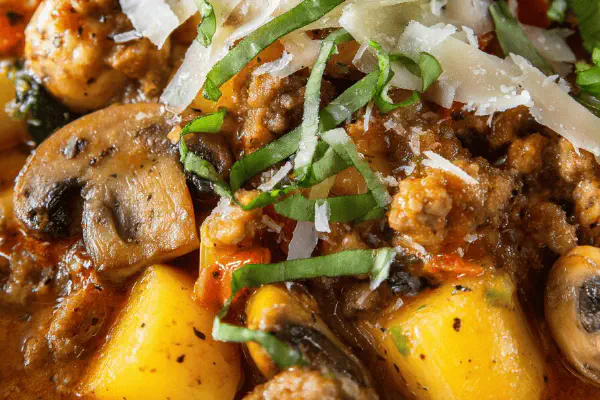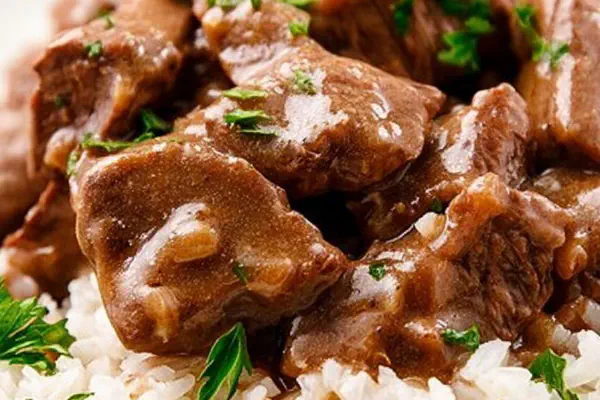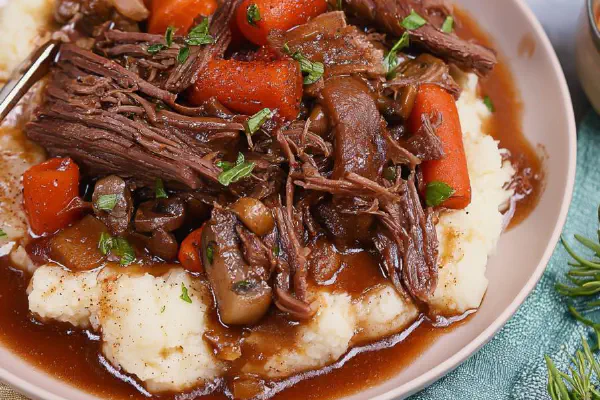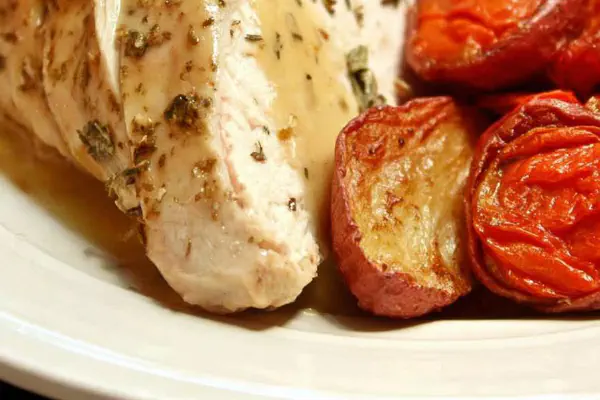Slow Cooker Corned Beef Cabbage
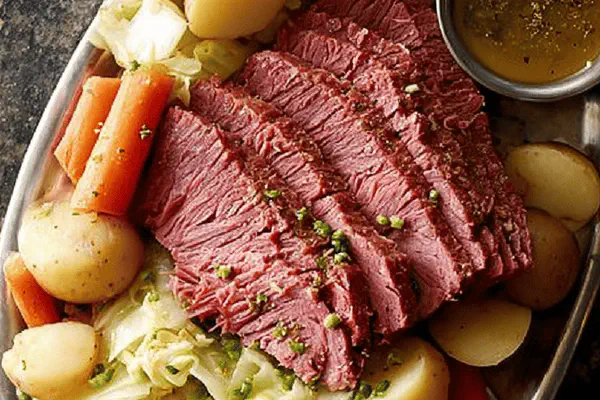
E
By Emma
Certified Culinary Professional
•
Recipe tested & approved
Corned beef braised low and slow with root vegetables and cabbage. Uses a 6-quart slow cooker to meld flavors. Spices from the corned beef packet plus extra pickling spice for kick. Beef broth barely covers meat making broth rich but not watery. Cook times tweaked for texture. Cabbage added late, steaming tender but still firm. Shredded or sliced beef served with horseradish or spicy mustard. Potatoes, onions, carrots, garlic, celery build a savory base layer. Practical ingredient swaps and sensory cues emphasized for foolproof results. Avoids overcooking, preserves moisture, and highlights layered seasoning.
Prep:
25 min
Cook:
Total:
Servings:
6 servings
#Irish American
#slow cooker
#braised meat
#root vegetables
#comfort food
Think slow cooked corned beef from an old family pot. Fat rendering, broth bubbling lightly. Brassica scents swirling in air. Tried fast cooking once. Disaster. Dry meat, mushy cabbage. Learned to trust low and slow, layering vegetables underneath—to hold moisture and soak fat. Pickling spice—don’t hold back. Another thing: more pickling spice means punchier broth. Beef broth over water, always. Adds backbone. Watching the cabbage— watch for that visual translucency, slight resistance when poked. That tells you it’s perfect, not falling apart. Trimming fat post-cook—personal. I like to leave some for richness, but excess turns greasy fast. Horseradish accents bring zip. Mustard? Classic, no debate. Keep broth balanced. Salt too high? Dilute. Veggies soggy? Adjust timing. Real kitchens demand flexibility. I’ve learned the hard way.
Ingredients
- 4 medium Yukon gold potatoes cut into chunks
- 2 medium yellow onions quartered
- 3 large carrots peeled and sliced thick
- 2 celery stalks chopped
- 5 garlic cloves smashed
- 4 to 5 pounds corned beef brisket with spice packet
- 5 cups beef stock or broth
- 3 tablespoons all-purpose pickling spice
- 1 small green cabbage cut into 1 inch wedges
- Salt and black pepper to taste
- Spicy mustard or horseradish sauce for serving
About the ingredients
Potatoes—I prefer Yukon gold, creamy and hold shape. Russets get mealy so avoid for this. Onions and celery build a savory backbone with carrots’ sweetness. If no celery, extra onion or leek works. Garlic cloves smashed, not minced, so flavor seeps slowly without burning. Corned beef brisket varies: 4 to 5 pounds works well in a 6-quart cooker. Too big, and cooking uneven. Beef broth beats water every time for depth. Use low sodium if you worry about salt. Pickling spice—if unavailable, mix coriander, mustard seed, peppercorns, bay leaf, and allspice. Adding two extra tablespoons may seem much; you want that aroma-rich punch. Green cabbage is classic but try savoy or napa for texture twists. If winter craving, add a touch of smoked paprika in broth for warmth. Horseradish sauce is mandatory; stash instant or fresh for that sharp finish.
Method
- Start by tossing potatoes, onions, carrots, celery, and garlic in the base of your slow cooker. Layer them evenly; this creates a flavorful bed that keeps meat from sticking and traps moisture.
- Set corned beef fat side up on this veggie mound. Drizzle in any juices from the packaging — don’t skip this; it amps flavor immediately. Sprinkle the included pickling spice packet across the top. Add two extra tablespoons of your homemade or store-bought pickling spice mix if you want deeper, bolder notes.
- Pour beef broth around the meat, trying not to wash off spices. The liquid should just kiss the top of the beef. Use about 5 cups but eyeball the level. Don’t drown it; too much broth can dilute flavor and make broth watery.
- Cover slow cooker. Cook on low 8 to 9 hours. Watch for the meat to pull back slightly from edges and for liquid to bubble lightly. You want a gentle simmer, not a rolling boil. If stewing vigorously, it’ll dry out the beef.
- Around 45 minutes before serving — when veggies are tender but not mushy — wedge cabbage into 1 inch pieces. Nestle them carefully around beef in broth. Cover and keep cooking until cabbage softens but still holds shape, about 40 minutes. Leaves should turn translucent with just a little bite left.
- Remove beef carefully; fat cap can be trimmed now or left for richness. Slice or shred meat against the grain to avoid toughness. Arrange beef, veggies, and cabbage on a platter. Ladle broth over everything or serve it alongside.
- Have horseradish or spicy mustard ready. They cut through that rich, fatty flavor and give a nice bright kick. A splash of vinegar on the cabbage does wonders if it feels dull.
- If broth gets too salty, dilute with a splash of water or unsalted stock. If veggies soak too long and get soggy, next time add them one hour later.
- If you lack a slow cooker, braise in a heavy pot on the stove at low temperature, covered for 3 to 4 hours, checking liquid levels often.
Cooking tips
Start slow cooker prep with layering. Root vegetables anchor meat and prevent sticking. Fat side up means fat bastes beef, keeping it moist. Adding package juices in? Don’t dump them. Those juices are flavor gold. Pour broth gently to keep spice sprinkle intact. Cooking low and slow matters: temperature too high dries meat. Bubbling should be subtle; vigorous boil ruins texture by toughening beef fibers. Check around hour 7 for doneness signs: edges pulling, juices clear. Add cabbage late—it cooks fast; adding earlier means soggy, lifeless leaves. Look for translucency and slight crunch to know it’s time to stop. Removing fat cap? Optional. For sandwiches, lean slices preferred; home dinners, a bit of fat adds richness. Slice beef against grain hard and fast to prevent stringiness. Serve immediately or broth turns cloudy and greasy if it cools too long. Horseradish or mustard on the side—mandatory cuts all that fat and salt. If broth tastes salty, dilute with unsalted stock or a splash of water. If no slow cooker available, low oven braise with tight lid, hot water bath is backyard secret. Watch liquid levels vigilantly there.
Chef's notes
- 💡 Layer root veggies first. Potatoes need that creamy hold—skip russets if you want firm chunks. Onions, celery, carrots all build flavor bases; smash garlic, don’t mince—slow flavor release without burning. Fat side of brisket faces up. Fat bastes meat over hours, keeps moisture locked. Juices in packaging? Pour them on top—flavor boost.
- 💡 Pour broth carefully. Aim just to kiss beef top. Too much liquid dilutes broth, waters down flavor. Watch for gentle bubbles, not a rolling boil. Too hot dries brisket, muscle fibers tighten. Around hour 7 check edges, they pull back, juices clear. Visual clues tell a lot.
- 💡 Add cabbage late. About 45 minutes before done. Wedges should turn translucent, leaves soft but with bite left. Overcook and leaves mushy, lose texture. Swap green cabbage for napa or savoy for different feel. Smoked paprika in broth adds warmth in cold months.
- 💡 Slice or shred beef against grain immediately after cooking. Cuts toughness, makes texture easier to chew. Leaving fat cap depends on preference but trim some for less greasy plates. Serve broth ladled over or on side, don’t let cool too long or gets cloudy, greasy fast.
- 💡 If broth salty, dilute with water or unsalted stock. Veggies soggy? Add them later next time, about one hour from done. No slow cooker? Use heavy pot, low stove heat, covered 3 to 4 hours. Keep an eye on liquid, add as needed to avoid burning or drying out meat.
Common questions
Why add cabbage so late?
Cabbage cooks fast. Add earlier and ends up mushy. Late add keeps some crunch, translucency signals done. Keeps shape better too.
Can I use water instead of beef broth?
Broth adds depth. Water works but thinner flavor, less punch. Low sodium broth better if worried about salt. Homemade swap if no broth.
What if my meat dries out?
Check temp. Too hot tightens fibers. Low and slow key. Fat side up bastes beef. Don’t over boil; gentle simmer needed. Add broth just to cover, skip extra water.
How to store leftovers?
Refrigerate in airtight container. Eat within 3 to 4 days. Freeze broth and meat separately for best texture. Reheat gentle to avoid drying meat.
